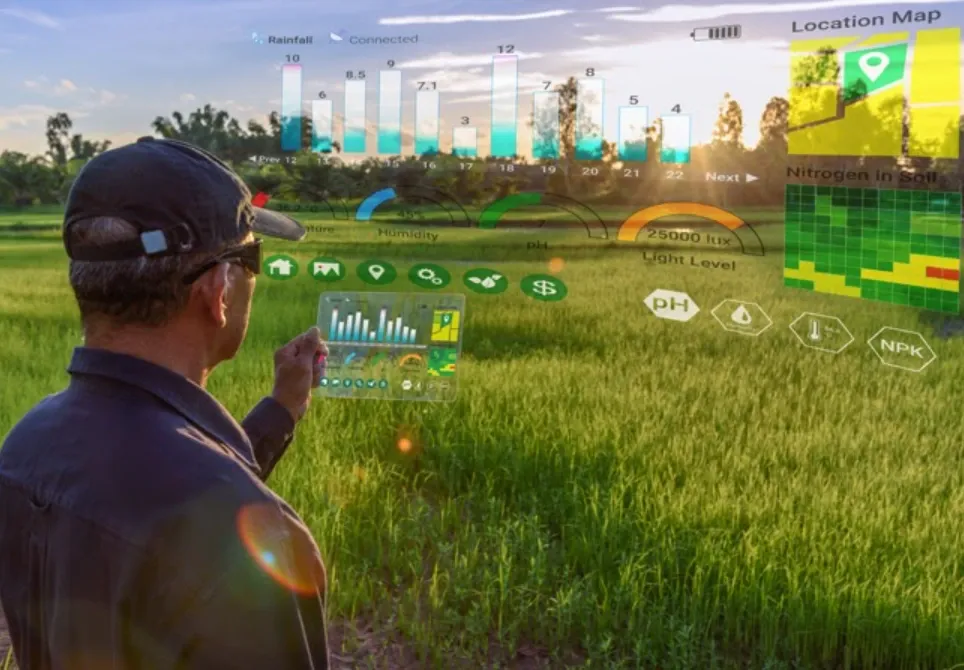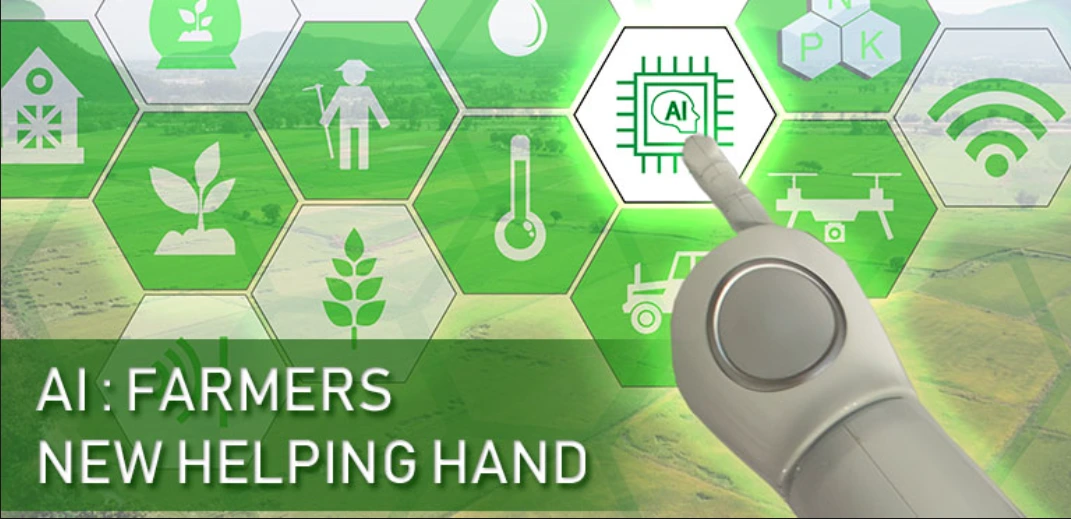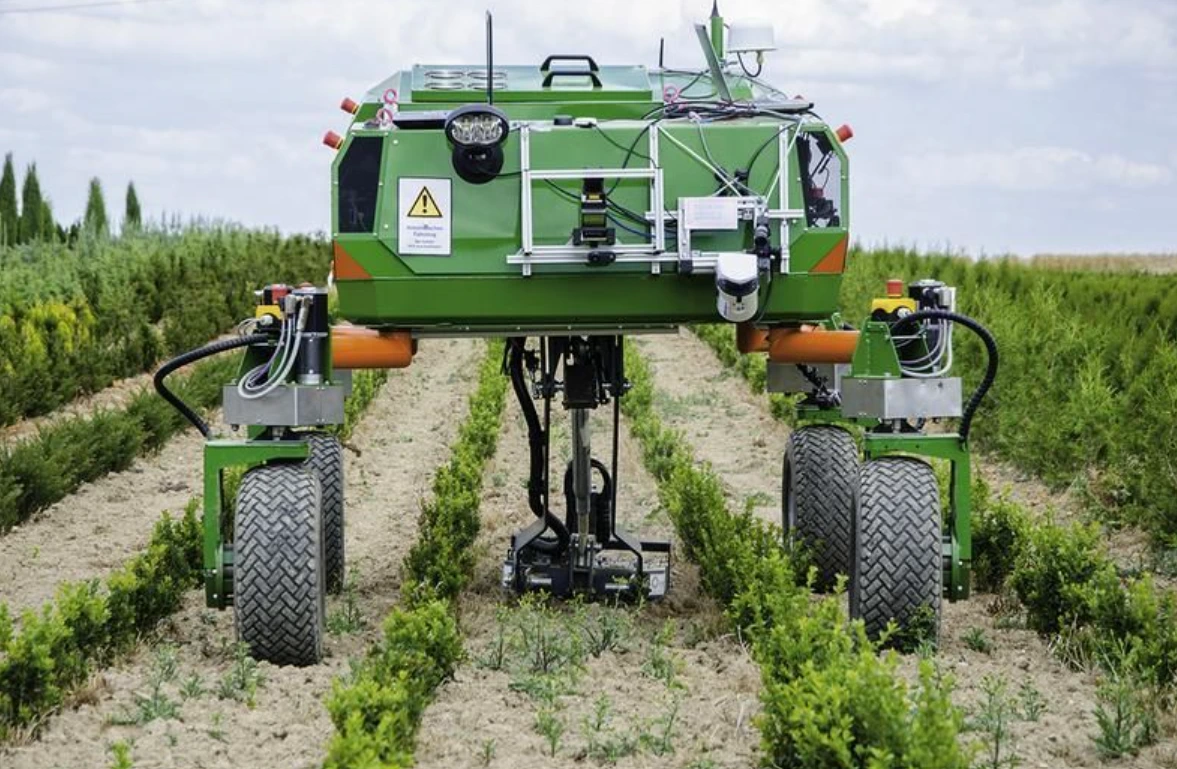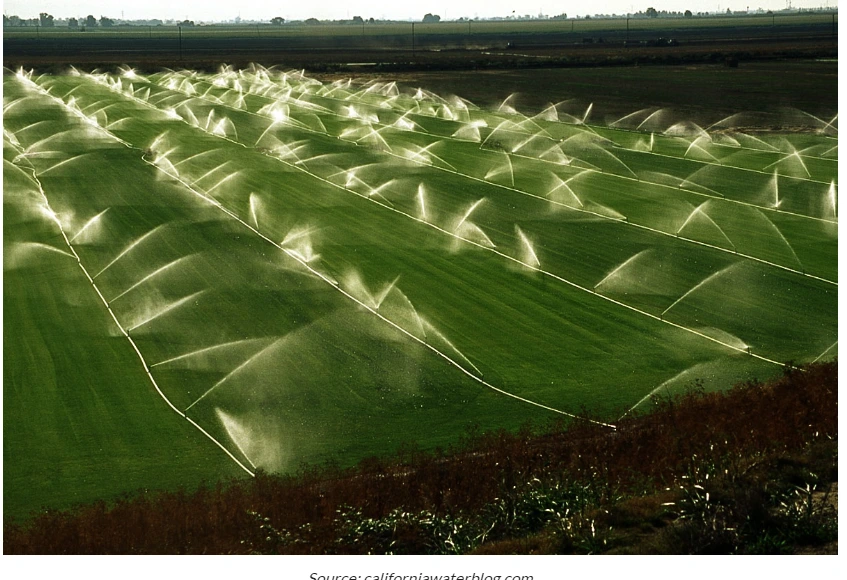Unlocking Machine Learning's Potential for Precision Agriculture

Introduction
Imagine an enormous swath of golden wheat fields, moving with the calm wind. Introducing Sarah, an optimistic farmer who has accepted the future. Equipped with Machine Learning algorithms, Sarah painstakingly examines data gathered from sensors set into the ground, drones circling overhead, and satellites orbiting far above Earth.
Artificial intelligence has provided subtle insights that have replaced the intuition in when to irrigate, fertilise, and harvest. Sarah's tractor responds to the demands of each plant detected by computer vision as it drives around the field with ease and changes course in real time.
In this narrative, the combination of human creativity and artificial intelligence creates a realistic picture of a time when precision agriculture is a real thing, guaranteeing that every square foot of arable land provides as much as possible to the world's food supply.
How Machine Learning Helps Precision Agriculture

There's a gentle buzz of change in the peaceful heartlands where crops sway like a sea of green. The whisper that Machine Learning (ML) would transform agriculture started it all. Envision a large area where each blade of grass and leaf rustling conceals a secret, and ML has the key to unlocking the wonders of nature.
The introduction of cutting-edge technology like machine learning has become a significant factor in the rapidly changing field of agriculture. With the use of machine learning, precision agriculture is changing conventional agricultural methods and exploring new limits for sustainability and efficiency.
We look into the various ways that machine learning is transforming agriculture, solving problems, and opening the door to a future of smart farming in this extensive investigation.
Explore the various ways in which Precision Agriculture benefits from Machine Learning below:
1. Smart Crop Monitoring
ML algorithms, fueled by vast datasets, empower farmers to monitor crops with unprecedented precision. Automated systems analyze data from sensors, satellites, and drones, enabling real-time insights into crop health, growth patterns, and potential issues.
2. Disease Detection and Prevention
One of ML's remarkable contributions is in the early detection of diseases affecting crops. By analyzing visual and sensor data, ML algorithms identify subtle signs of plant diseases, allowing farmers to intervene promptly, thereby minimizing crop losses and ensuring a healthier yield.
3. Optimized Resource Management
ML models process data related to soil conditions, weather patterns, and historical crop performance to recommend precise irrigation schedules, nutrient application, and crop rotation strategies. This level of precision enhances resource efficiency, reduces waste, and promotes sustainable farming practices.

4. Autonomous Machinery and Robotics
ML-driven autonomous machines, such as smart tractors and robotic harvesters, are transforming the landscape of labor-intensive tasks. These machines leverage ML algorithms to navigate fields, identify and selectively harvest ripe crops, and even perform delicate tasks like pruning and weeding with unmatched precision.
5. Weather Prediction and Risk Mitigation
ML models, trained on historical weather data, contribute to accurate weather predictions. Farmers can anticipate extreme weather events, plan accordingly, and implement preventive measures, thus mitigating the risks associated with unpredictable climate conditions.
6. Data-Driven Decision-Making
The integration of ML in agriculture facilitates data-driven decision-making. Farmers can access comprehensive insights into crop performance, market trends, and consumer preferences, empowering them to make informed choices that maximize yields and profitability.
Applying AI and Computer Vision in Precision Farming: Optimizing Irrigation
To maximise planting, irrigation, and fertilisation, precision farming makes use of real-time weather, soil moisture, and crop health data. Farmers may make better judgments about their farming operations, which will enhance crop yields and promote more sustainable farming methods, by employing AI and computer vision to analyse this data.
For instance, Taranis, a firm, has created a system that analyses aerial photos of crops using computer vision and machine learning to spot problems like disease, pests, and nutritional deficits. The system then uses this data to optimise irrigation and fertilisation, increasing crop yields while using fewer resources.
This is a sample of Python code that shows how irrigation can be optimised for precision farming using computer vision and machine learning:
import cv2
import numpy as np
from keras.models import load_model
# Load the trained model
model = load_model('precision_farming_model.h5')
# Capture images of the crops using a camera or drone
cap = cv2.VideoCapture(0)
ret, image = cap.read()
# Pre-process the image
image = cv2.resize(image, (256, 256))
image = np.expand_dims(image, axis=0)
# Use the model to predict the optimal amount of irrigation for the crops
predictions = model.predict(image)
# Use the predictions to control irrigation
irrigation_amount = predictions[0][0]This code makes use of a pre-trained machine learning model to predict, from the crop photographs, the ideal quantity of irrigation. The model evaluates the crop images and produces predictions based on those predictions, which are then used to manage the amount of irrigation. By using the appropriate amount of water for the crops, farmers may decrease waste and boost agricultural yields.
Case Study revealing the use of Computer Vision for Precision Agriculture
Computer vision models offer profound insights into factors like biomass, nutrient levels, and leaf area, making them a crucial tool in precision agriculture. The See and Spray system, which autonomous tractors use, is a well-known example of its application. It makes use of six stereo cameras and sensor fusion to produce a thorough depth map surrounding the tractors and separate things (such as people or trees) using semantic segmentation models.
During crop monitoring operations, this computer vision-based technique has been shown to reduce herbicide usage by up to 77%. This case study demonstrates how precise control over current procedures made possible by cutting-edge technologies can contribute to resource conservation in precision agricultural methods at a scale never seen before.

Real-World Example of Vision AI in Precision Agriculture
Examining actual examples of how AI and computer vision technologies are being applied to increase agricultural yields will help us better grasp the potential of these technologies in precision agriculture.
The Central Valley of California is one place where precision farming is being used. According to a University of California, Davis study, crop yields can rise by as much as 30% when precision farming is used. Precision farming optimises planting, irrigation, and fertilisation by using real-time data on weather, soil moisture, and crop health. Additionally, the study discovered that precision farming can save up to 40% on water use.

Conclusion
The fusion of artificial intelligence and agriculture in precision farming is revolutionizing the way crops are grown. Through the power of machine learning, farmers can now make informed decisions about irrigation, fertilization, and harvesting, leading to increased yields and more sustainable practices.
Real-world examples, like the success in California's Central Valley, showcase the tangible benefits of these technologies, promising a future where smart farming maximizes productivity while conserving resources. The collaboration between human ingenuity and AI is paving the way for a more efficient and resilient agricultural landscape, ensuring a plentiful and sustainable global food supply.
Frequently Asked Questions
1. How IoT & Machine learning can be used in precision agriculture?
In precision agriculture, the integration of IoT (Internet of Things) and machine learning is transformative. IoT sensors collect real-time data on soil moisture, weather conditions, and crop health, enabling farmers to make informed decisions.
Machine learning algorithms analyze this vast dataset to provide insights, such as optimal irrigation schedules, nutrient application recommendations, and early detection of crop diseases. This synergy allows for precise and timely interventions, optimizing resource use, minimizing waste, and ultimately increasing crop yields sustainably and efficiently.
2. What is precision agriculture?
Precision agriculture is an advanced farming approach that leverages technology, data, and analytics to optimize various aspects of crop cultivation. Using tools such as GPS, sensors, drones, and machine learning, precision agriculture enables farmers to make informed decisions about planting, irrigation, fertilization, and harvesting.
By precisely tailoring these activities to the specific needs of individual crops or sections of a field, farmers can enhance efficiency, reduce resource usage, and increase overall crop yields, contributing to sustainable and economically viable farming practices.
3. How machine learning is used in forecasting crop diseases & pests?
Machine learning is employed in forecasting crop diseases and pests by analyzing large datasets that include information on weather conditions, soil health, and historical instances of diseases or pest infestations. Using this data, machine learning algorithms can identify patterns and correlations that may not be apparent through traditional methods.
By training the model on these patterns, it becomes capable of predicting the likelihood of disease or pest outbreaks based on current environmental conditions. This proactive approach allows farmers to implement timely and targeted interventions, such as applying pesticides or adjusting agricultural practices, ultimately minimizing crop losses and promoting healthier yields.

Simplify Your Data Annotation Workflow With Proven Strategies
.png)


